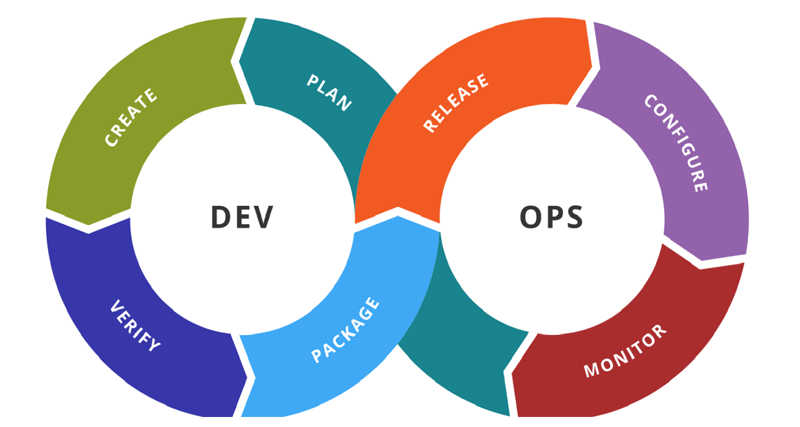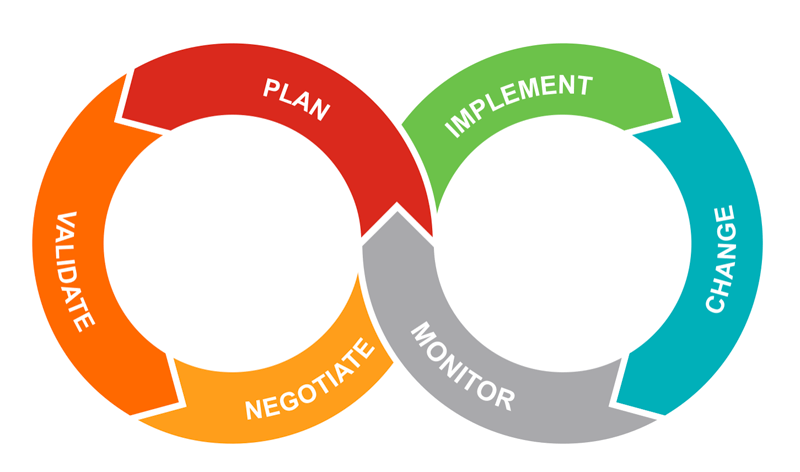Influence of DevOps on Agile ITAM/SAM
After many years of implementing ITIL process framework for IT service and support, organizations started to look around for info about what they should be tackling next. Creating an agile support team that could enable business transformation became the goal and this gave rise to Development Operations or DevOps has it is commonly called.
IT and Software Asset Management (ITAM/SAM) has always been integrated into the support and procurement teams, but it has been a laggard, rather than an innovator, to adopting or implementing new processes. This has changed with the introduction ITAMOps or Agile ITAM. This concept is starting to gain traction as more ITAM teams need to support the rapid, transformational changes that are occurring in the business.
To understand this concept better, let’s take a look at DevOps and how that compares to ITAMOps. The key stages in DevOps are embodied in this infinity loop diagram from Wikipedia because they are iterative without an end state and with a focus on speed.
- Plan
- Create
- Verify
- Package
- Release
- Configure
- Monitor

Successfully implementing DevOps, requires knowing your environment in real time, with accurate performance data, impact analysis and data analytics. ITAM/SAM processes touch several of these stages, but the primary impact is in the Planning stage, where there is a focus on ensuring the right assets are in place to support the subsequent stages.
To support DevOps, ITAM/SAM needs to be equally nimble. While I’m graphically challenged (the talented Ivanti graphics team created this one), here’s my attempt at creating a parallel to DevOps process. This is intended to demonstrate the iterative ITAM/SAM high level processes. Of course, there are supporting sub-processes that detail all that is involved at each stage.
- Plan
- Validate
- Negotiate
- Implement
- Change
- Monitor

To support these stages, Ivanti’s solutions can be applied to both the data center, client and mobile environment. Here are a few examples. By creating an asset catalog of all the approved assets and applications that can run in the organization, a proactive approach to managing employee requests can be implemented. In conjunction with asset lifecycle management, the out of the box employee on/off boarding capabilities can ensure that employees are given assets they need to do their jobs efficiently. As their role changes or they move into a new position, permissions and access to new application can follow them. This level of automation reduces the manual labor needed to keep employees effective.
Integration with systems of records, such as ERP or procurement tool, to track purchase orders and B2B connectors to software resellers, such as CDW and SoftCat, can support faster updates to information about purchases and entitlements. Using the Scenario Modeling feature in License Optimizer, organizations can model decisions about hardware, software and cloud to determine what type of license, platform or configuration is going to be the most cost and risk effective.
Another valuable point of integration, is with process automation tools, such as the one in Ivanti’s Service Manager. If an application isn’t installed in compliance with the license agreement, Ivanti’s agentless Data Center Discovery tool will discover the install when it is monitoring the servers, correlate the inventory data to the license agreement, and send an alert to process automation notifying about the risk. This level of intelligence and automation is much needed in a world where there are always headcount constraints.
On the security side, by constantly scanning the network attached assets, looking for new devices and end of life assets that may not be covered under a support agreement or the vendor has discontinued support for legacy technology. Protecting against security risks is everyone in the business’ job. With standard reports that illustrate where the remediation opportunities lie, chief security officers can lead the effort to eliminate the risk.
For more information about how to create an agile, business focused ITAM/SAM strategy, check out the ITAM/SAM attainment model white paper. Or contact Ivanti directly, if you would like to learn more about how our solutions or professional services team, can move your environment from reactive to proactive so you can take steps toward implementing ITAM Ops.

